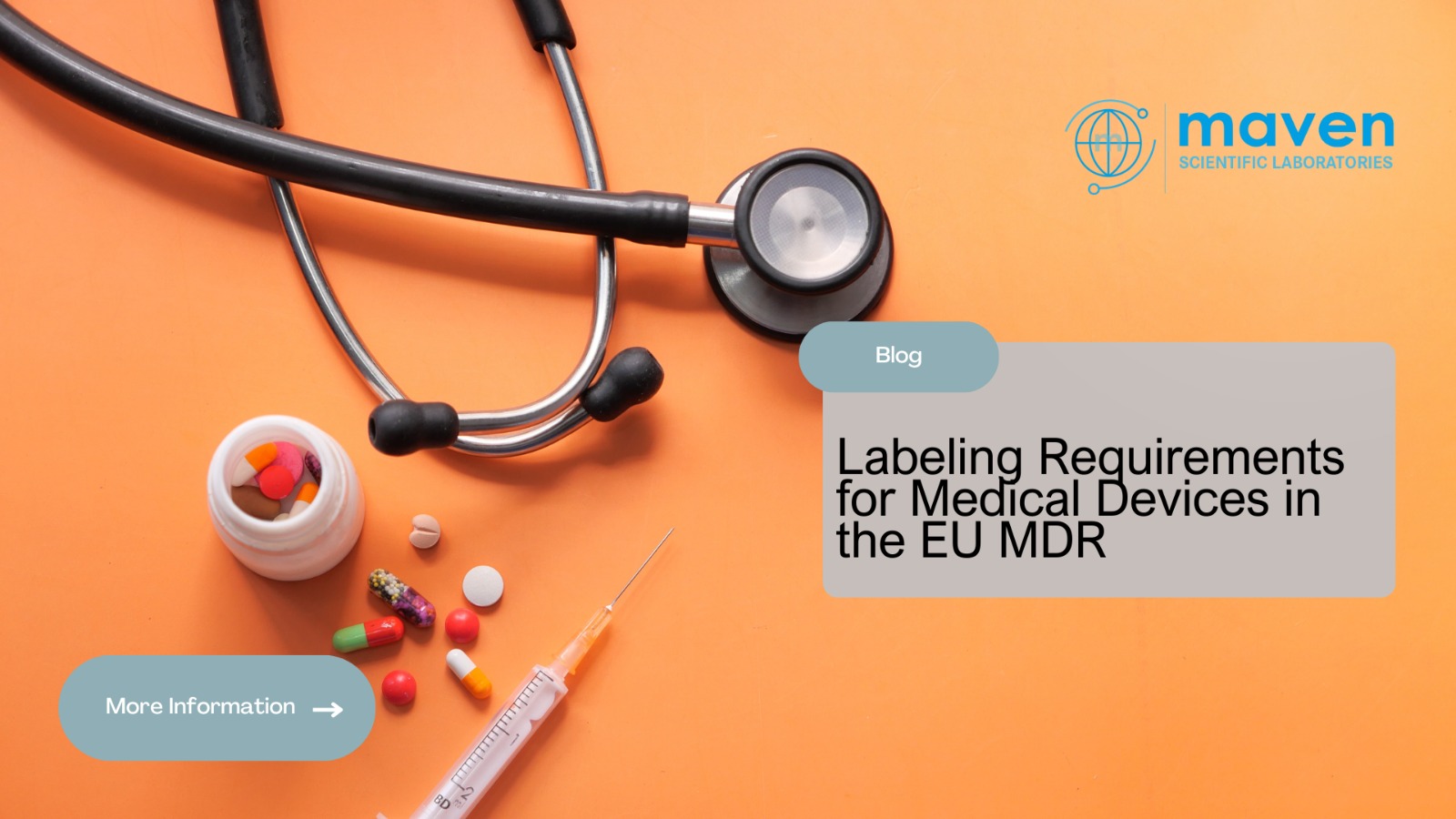Labelling Requirements for Medical Devices in the EU MDR
July 03, 2024
As the EU MDR (Medical Device Regulation) transition deadline approaches, manufacturers must prioritize and meticulously execute the labeling criteria to ensure high levels of quality and safety. Proper labeling is crucial as mistakes can hinder development, lead to product recalls, and cause costly delays. Here’s an in-depth look into the requirements and best practices for complying with EU MDR labeling criteria.
MDR Labeling Requirements in the EU
Essential Information on Labels
- Device Name and Trade Name
- If there is no expiration date, the label must include the device's name and trade name, along with the manufacturing date. This information is crucial for traceability and identification.
- Medical Device Icon
- A generic icon indicating that the product is a medical device must appear on all labels. This helps users easily identify the nature of the product.
Manufacturer and Representative Information
- Manufacturer Details
- If the manufacturer is located outside of the EU, the label must provide enough information for consumers to recognize the contents and intended use of the package.
- EU Representative Information
- For manufacturers based outside the EU, the label must include information about the approved EU representative. This ensures accountability and compliance with local regulations.
Usage and Safety Information
- Safe Usage Period
- The time period for safely using or implanting the product should be clearly expressed on the label, in terms of year and month.
- Alerts and Instructions
- Labels must include any necessary alerts, instructions, precautions, or inconsistencies to inform users immediately about important aspects while using the device.
Special Requirements for High-Risk Devices
- Class III and Implantable Devices
- For Class III and implantable devices, a General Safety and Performance Requirements (GSPR) checklist must be shown on the labels. This includes a description of safety and clinical performance.
Electronic Instructions for Use (eIFU)
- eIFU and Web Address
- Labels must include a web address for the electronic Instructions for Use (eIFU), providing users easy access to comprehensive guidance.
Online and Print Publication
- Label Publication
- Device labeling should be available both online and in print on the manufacturer's website. Manufacturers must also publish user data on their websites, ensuring transparency and accessibility.
Unique Device Identification (UDI)
- UDI Carrier
- Labels must carry the Unique Device Identification (UDI), which includes unique identifying "part numbers" issued by a neutral party. The UDI label must be on finished goods, product packaging, and in certain cases, directly on the product itself (direct part marking). UDIs must also be registered in the EUDAMED database.
- UDI Components
- The UDI symbol must include a Device Identifier (DI) and a Production Identifier (PI). This helps in tracking and managing medical devices throughout their lifecycle.
Machine-Readable Information
- Human and Machine-Readable Format
- Labels should include machine-readable information, which must also be presented in a human-readable format to ensure clarity and usability.
Composition and Sterility Information
- Material Composition
- For devices with materials absorbed or distributed throughout the body, labels must provide the overall composition and quantitative information on key constituents.
- Sterile Barrier Labeling
- Labels must explicitly specify conditions for sterile barrier labeling, including:
- Sterile barrier identification
- Sterilization process
- Declaration of sterile condition (e.g., sterile, non-sterile)
- Manufacture and expiration dates (month and year)
- Directive to review Instructions for Use (IFU) if the package appears damaged
- Labels must explicitly specify conditions for sterile barrier labeling, including:
Importance of Compliance
Recognizing and enforcing the above labeling criteria is crucial for making your medical device label EU MDR-ready. Failure to adhere to these protocols can lead to enforcement issues and expensive product recalls. Therefore, manufacturers must stay updated with the latest MDR labeling standards in the EU.
Assessing Your Device Labels
How effective are your device labels? Are they in line with the EU MDR specifications? For a straightforward assessment, consider consulting with a Regulatory Device Labeling specialist. Ensuring compliance not only safeguards your products but also protects your reputation and market position.
Conclusion
Careful planning and execution of medical product labels are essential for compliance with EU MDR labeling criteria. By adhering to the detailed requirements outlined above, manufacturers can avoid costly delays and ensure their products are safe, effective, and ready for the market.
CATEGORY: Medical Devices, Regulatory Affairs
KEYWORDS: Medical Devices, EU MDR, labeling, EU, Unique Device Identification (UDI), Production Identifier (PI), Device Identifier (DI), IFU
HASHTAGS: #MedicalDevices#EUMDR#MedicalDeviceRegulation#Labeling#EUCompliance#UniqueDeviceIdentification#UDI#ProductionIdentifier#DeviceIdentifier
#InstructionsForUse#IFU#RegulatoryCompliance#HealthcareStandards#MedTech#PatientSafety#HealthcareRegulation


Post a comment